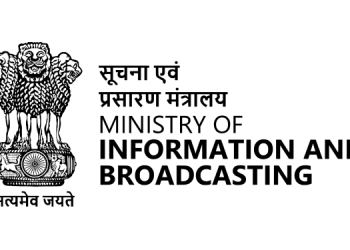Multiplex chain PVR raised ticket prices by 23pc citing inflation, cost of labour, and redevelopment costs, according to a report in The Economic Times. Post its acquisition of Inox announced March 2022, the combined multiplex share of the entity with over 1,500 screens was over 50 percent. This was in lieu of annual hikes of 5 to 7pc deferred over the last two years, contended the company.
In March 2022, the Andhra Pradesh government revised the cinema ticket rates for all categories including, non-AC, AC, special cinemas and multiplexes. Reportedly, the other multiplex chains across India have also hiked ticket, food, and beverage costs by at least 20pc.
This move comes during a period where the footfalls at the cinema theatres are yet to touch the pre-pandemic levels. Industry experts observe that while the price hike is a move to compensate for the financial losses incurred during the pandemic period, the decision can keep away the regular cinema viewers from the cinema halls. They are also of the opinion that small budget movies will be affected by the price hike move.
We asked them if the price hikes will drive consumers further to OTT screens.

“It’s definitely a significant jump, and will lead to some switchover from price sensitive consumers,” observes Gaurav Gokhale, Chief Operating Officer, Endemol Shine India.
At the same time, Gokhale also believes that there won’t be a mass migration as cinema offers a wholesome outdoor experience that cannot be replaced by smaller personal screens.
“Theater owners have gone through a tough two years owing to pandemic so one can understand their dilemma and urge to make up for lost business. But instead of only pricing, they must also look at efficient strategies to augment toplines through more F&B and advertising sales, as these are more subtle and tolerable for a basic consumer than ticket price increase, which directly affects one’s share of wallet, and hence may trigger a forced choice of avoiding theatrical watch altogether,” he adds.

“The multiplex experience has become more of a social event than just watching cinema. So while this price hike may impact cinema viewership to an extent, fundamentally OTT viewership is already increasing. OTT platforms are growing not only due to increasing price of the theatrical experience but also due to the better quality of productions and near simultaneous launch of movies across both theatres and OTTs. Also the convenience of watching anytime,” says Lloyd Mathias, Business Strategist and Angel Investor.

According to Siva Pillai, CEO of OTT platform Mainstream, the film-going experience is already slipping away from the average middle-class because of the high ticket prices.
“The high ticket price and everything that is associated with going to a multiplex to enjoy a movie, let it be buying snacks or driving to the cinema theatre or getting a cab, everything is getting more and more expensive which makes them stay away from the cinema theatres. If there are people who are used to watching a new movie every week, I am sure that’s going to change to one new movie a month. The price hike in cinema ticket rates are for sure going to drive more consumers towards the OTT universe. Movies are also moving faster from theatres to OTT platforms and people are willing to wait for the movie release on OTT and watch it at their convenience in the comfort of their homes. People are ready to spend on installing home theatre systems and thereby bringing theatre experience closer to home. This is definitely a win-win for OTT players,” Pillai adds.
So would linear TV too benefit if watching movies in cinemas get prohibitively expensive, at least at the past frequency, for those in the middle and lower middle part of the economic pyramid?
“Once a consumer decides not to go to a theatre due to pricy tickets, there are various alternatives that will be under consideration. It could mean alternative means of outdoor entertainment with family such as going to a beach or a restaurant, or in some cases switching to a different screen and watching something else at that time. In case of the latter, OTT streaming and linear TV both benefit and will vie for the consumer’s attention,” says Gokhale.
“Linear TV also will benefit. But, there is definitely a fact that on-demand watch is not available on linear TV, you need to skip the schedules. Old school viewers, the people who have been used to and grown up with TV, will stick on with linear TV. The new set of people who are used to convenient watching on OTT platforms where on-demand watch and convenience is an added advantage will be skewed towards OTT universe,” says Pillai.
Mathias has a different opinion. Linear TV is being impacted by a whole host of media, OTT being primary among them, he contends.
“However, live sports and news consumption will keep linear TV relevant,” he adds.
“The price elasticity is very high in cinema, higher the price less the interest in going to cinema theatres. The audience have become very choosy and they opt for movies which offer them a complete cinematic experience ( which are provided by very few films). On top of that if the price of the cinema tickets are hiked then the audience will become ultra choosy, which will adversely affect cinema theatre revenues. The small and medium budget movies are affected most in the process. Opting for flexi-ticket prices is a much better option to revive the industry,” surmises film producer G Dhananjayan.
















